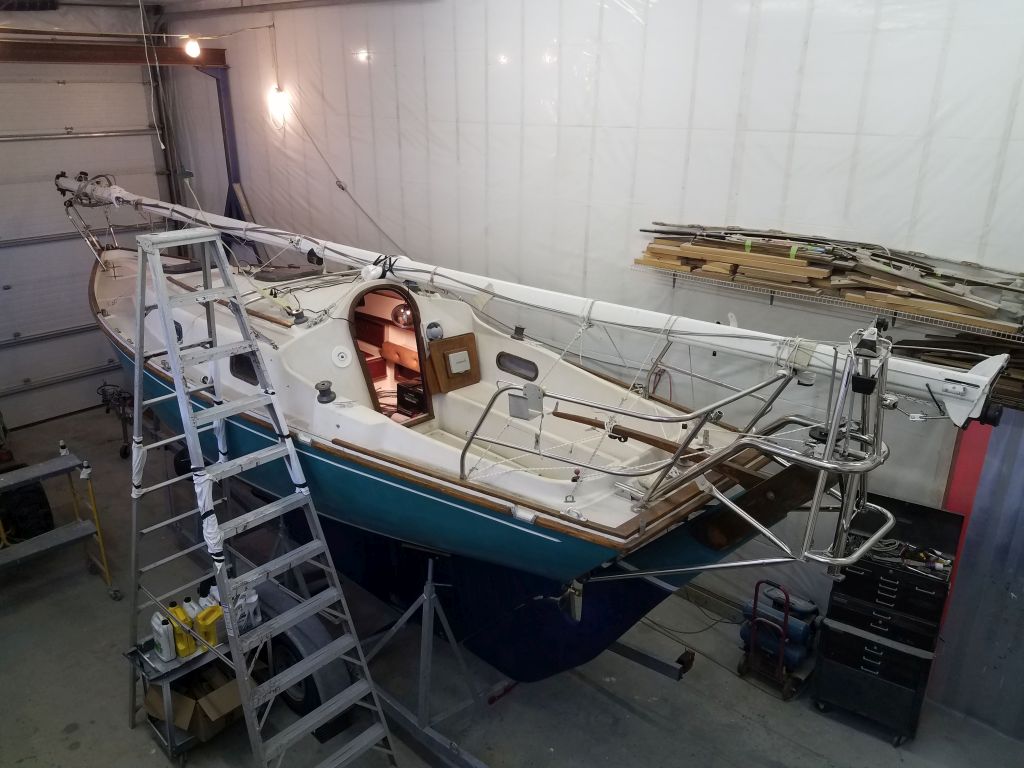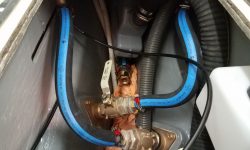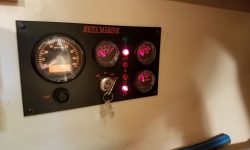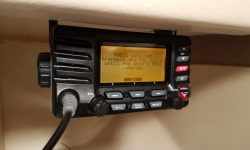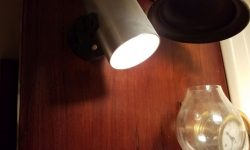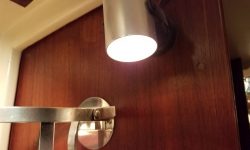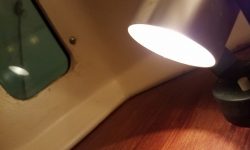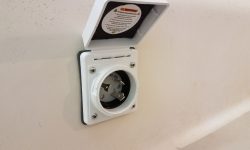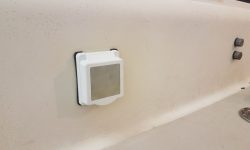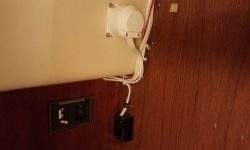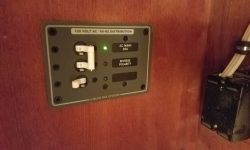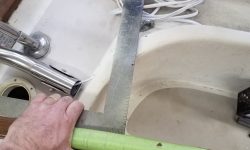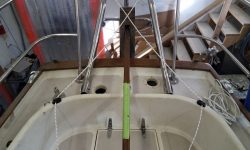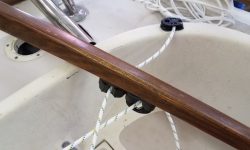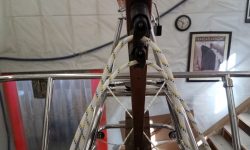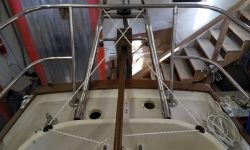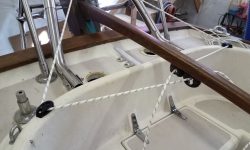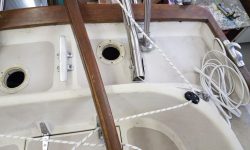January 15, 2019
Dharma Rose 31
Tuesday
Finishing up the hose runs and installations in the engine room, I installed the new hoses for the cockpit scuppers.
When I’d first installed the batteries a few days earlier, I found that the little fuses (I’d had them in stock) I’d installed on the positive terminals were already blown, causes unknown, but it gave me a moment’s consternation when I turned the battery switch and nothing happened. Since the only wiring I’d done was on the battery and engine side, I’d no idea as to the status of the boat’s existing wiring, though I knew from the owner it was functional. Brief troubleshooting at the time led quickly to the fuse problem at the batteries.
So I ordered replacement fuses and now, with them on hand, I reinstalled the connections and this time had no problems with the system, as anticipated. I tested various items to ensure that the new battery wiring was as it should be: It was.
Next, I installed and wired the new shore power inlet, replacing the old one that, while apparently functional, had disintegrated upon removal. Once the installation was complete, I tested the system.
I temporarily installed the tiller so I could layout and install the blocks and tiller-mounted cleats for the Monitor windvane control lines. On this boat, the way the lines led from the windvane itself meant that only a single turning block was required in order to lead and redirect them to the tiller, and I’d already ordered the required blocks and had them on hand.
Using the guidance from the windvane instructions, as well as my past installation, I made some layout marks on the tiller and, with the tiller at approximately 15° either side of centerline, used a square to transfer the marks to the coaming; this indicated the position for the turning blocks. With a sistership’s installation and resultant confidence already in the books, I went through these motions quickly and more as a means of confirmation, and soon I’d mounted the new blocks to the coamings in the appropriate positions with threaded holes, machine screws, and sealant.
The adjustment system consisted of a pair of cam cleats to mount on the bottom of the tiller, allowing various easy adjustments for weather helm, etc. With the basic position mark already in place, I attached the two cam cleats on either side of the mark, completing the setup. I left the lines long at the tiller so the owner could make final adjustments and decide how much excess line to leave in the final installation.
With most of the work on the boat actually done, I spent some time removing excess tools and cleaning up parts of the cabin. The new propeller shaft arrived at the end of the day, hand-delivered by the machine shop, so I planned to finalize the engine and shafting installation next time, along with a short list of sundry small jobs to complete.
Total time billed on this job today: 5 hours
0600 Weather Observation: 6°, clear. Forecast for the day: Partly sunny, 28°


